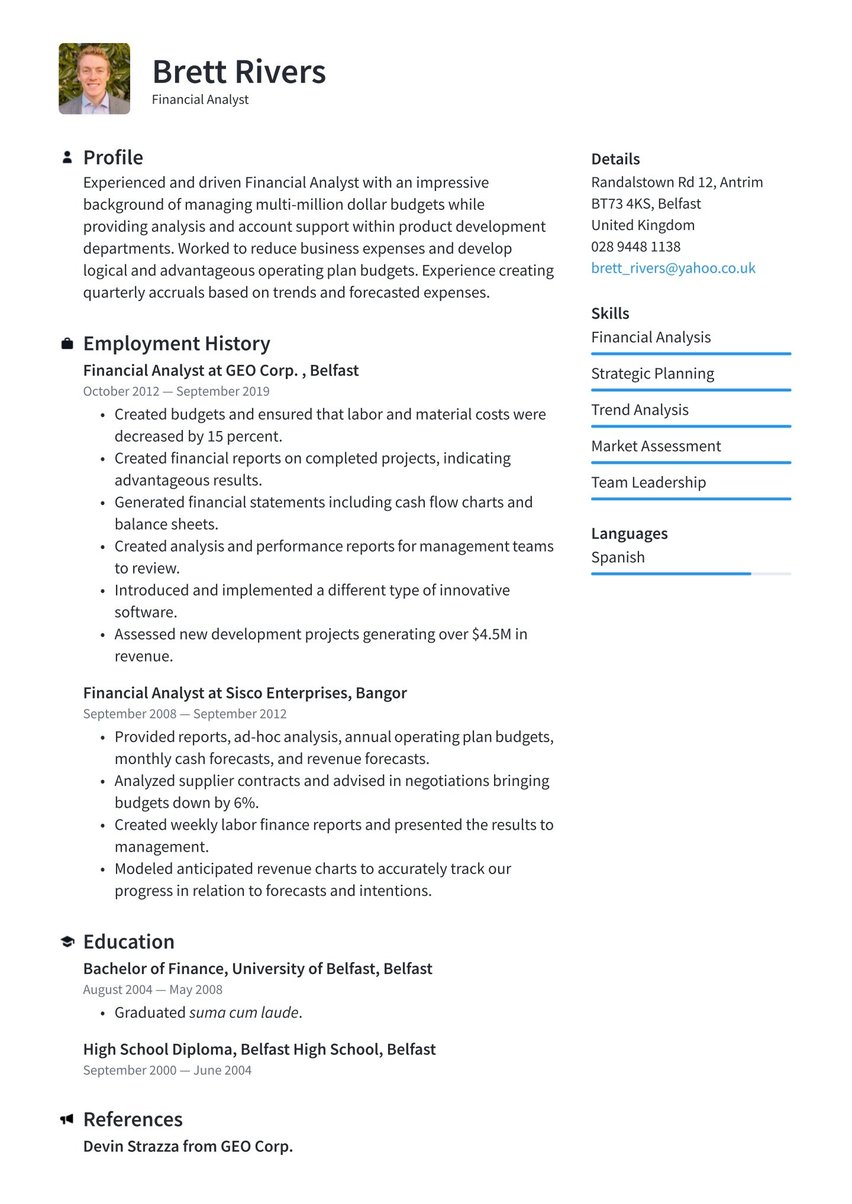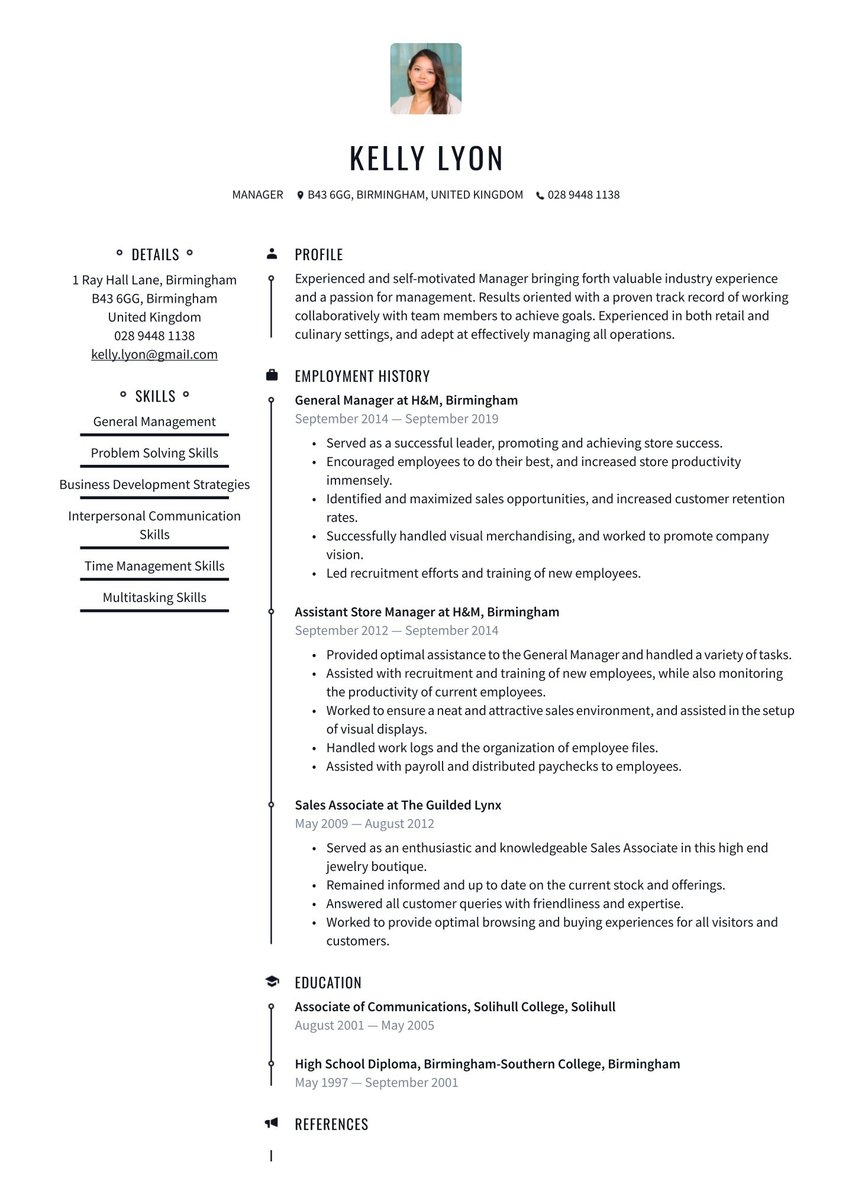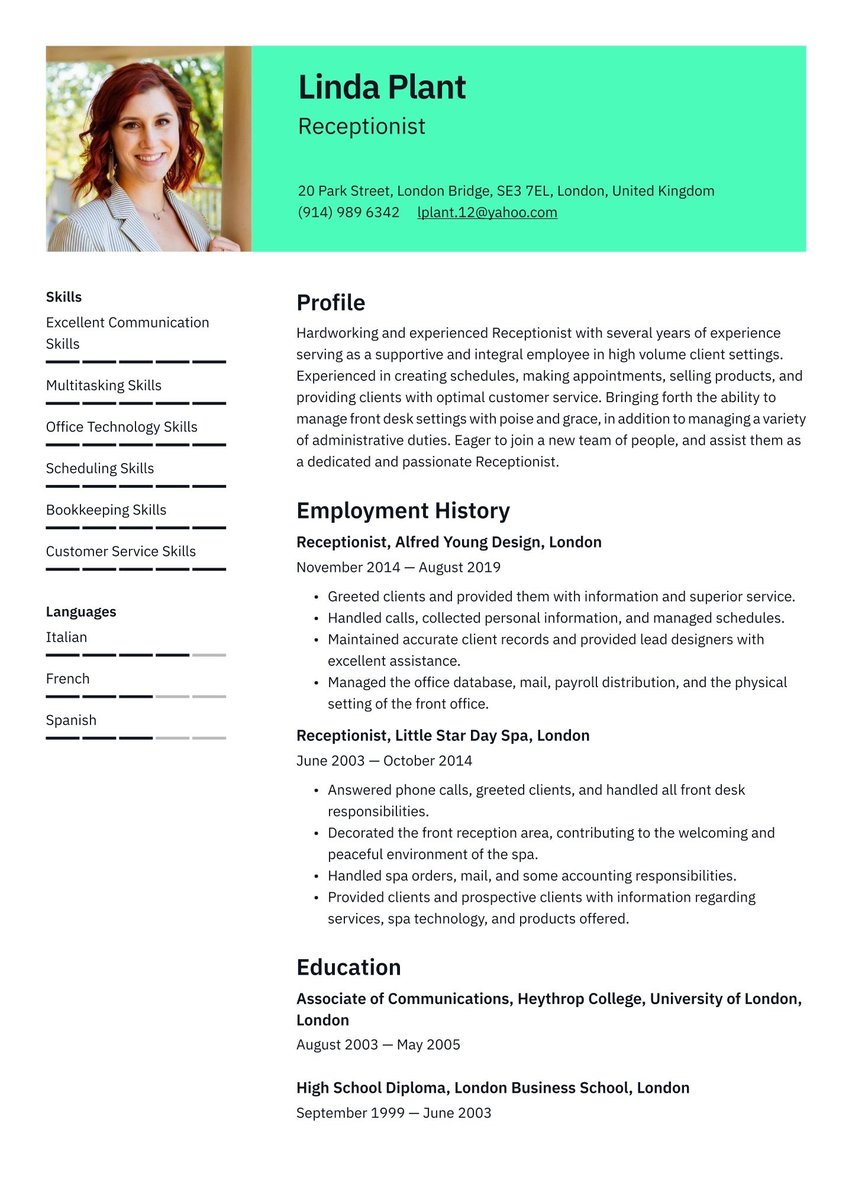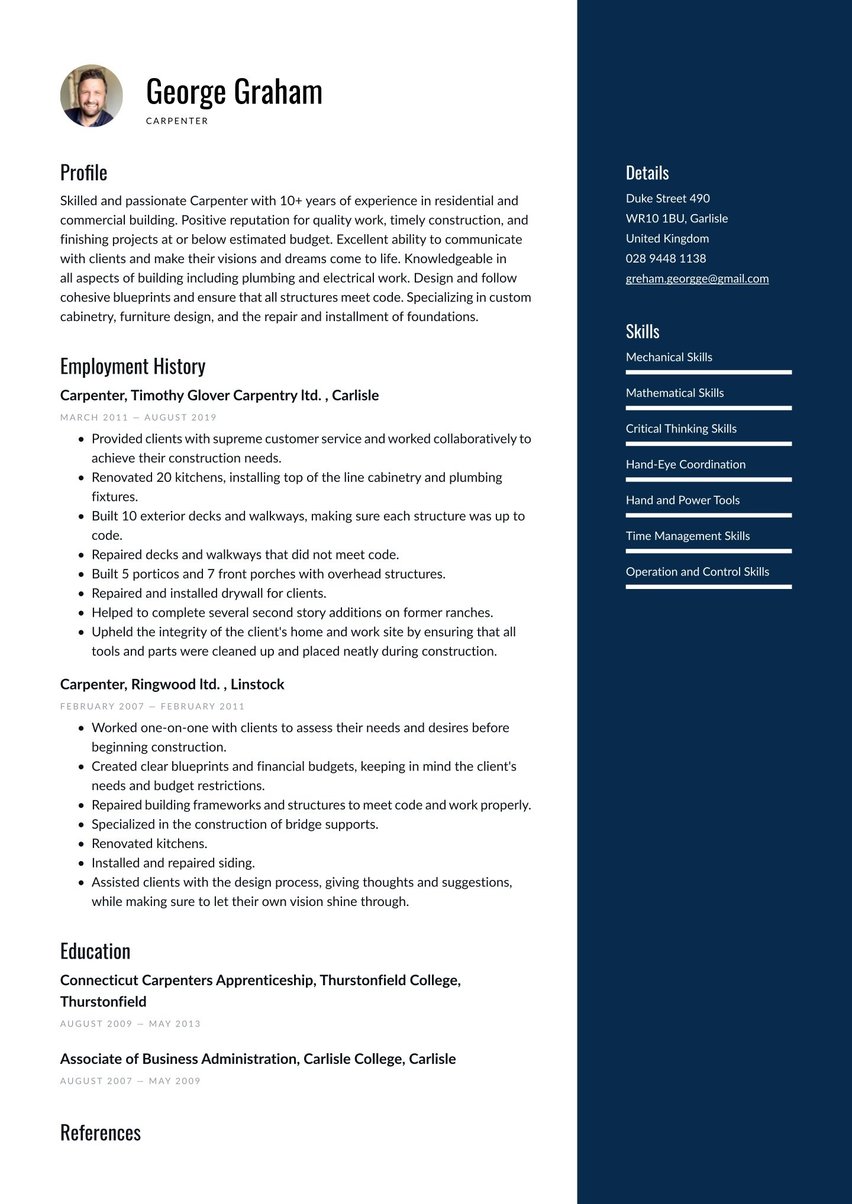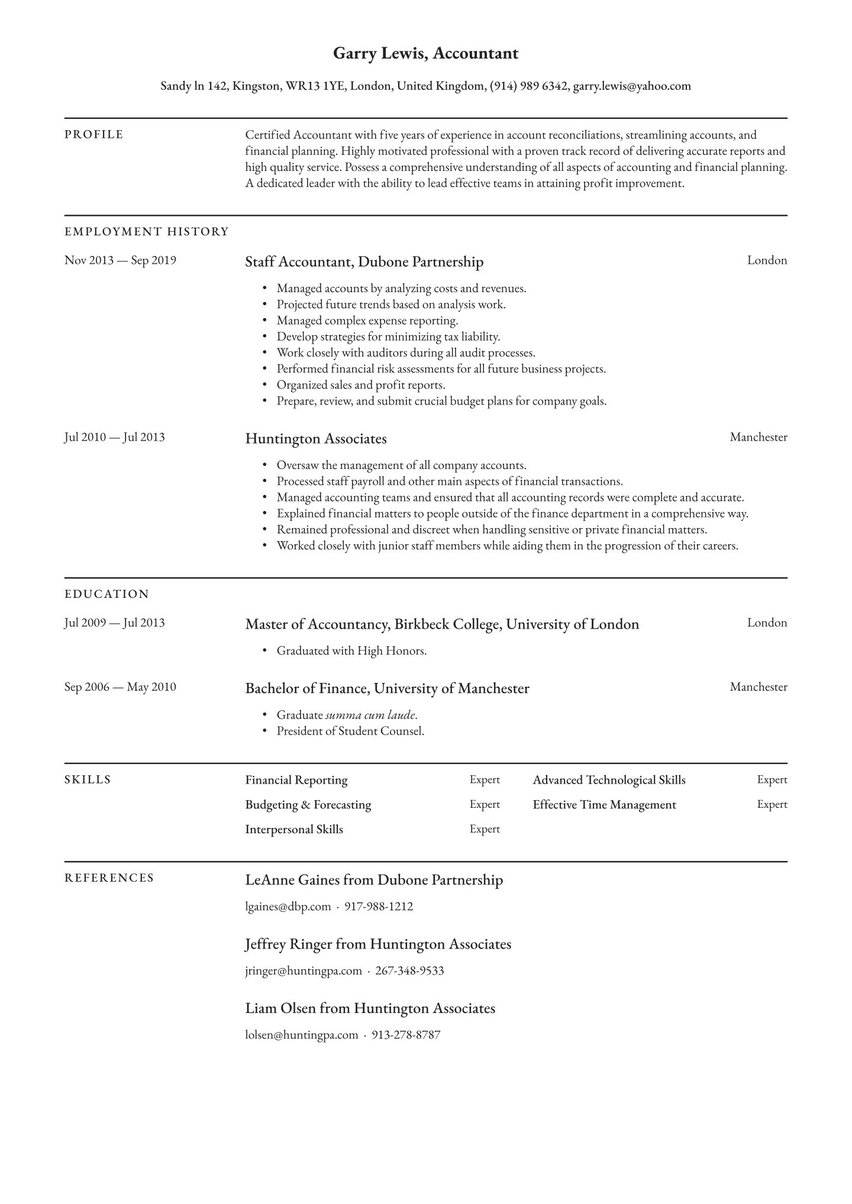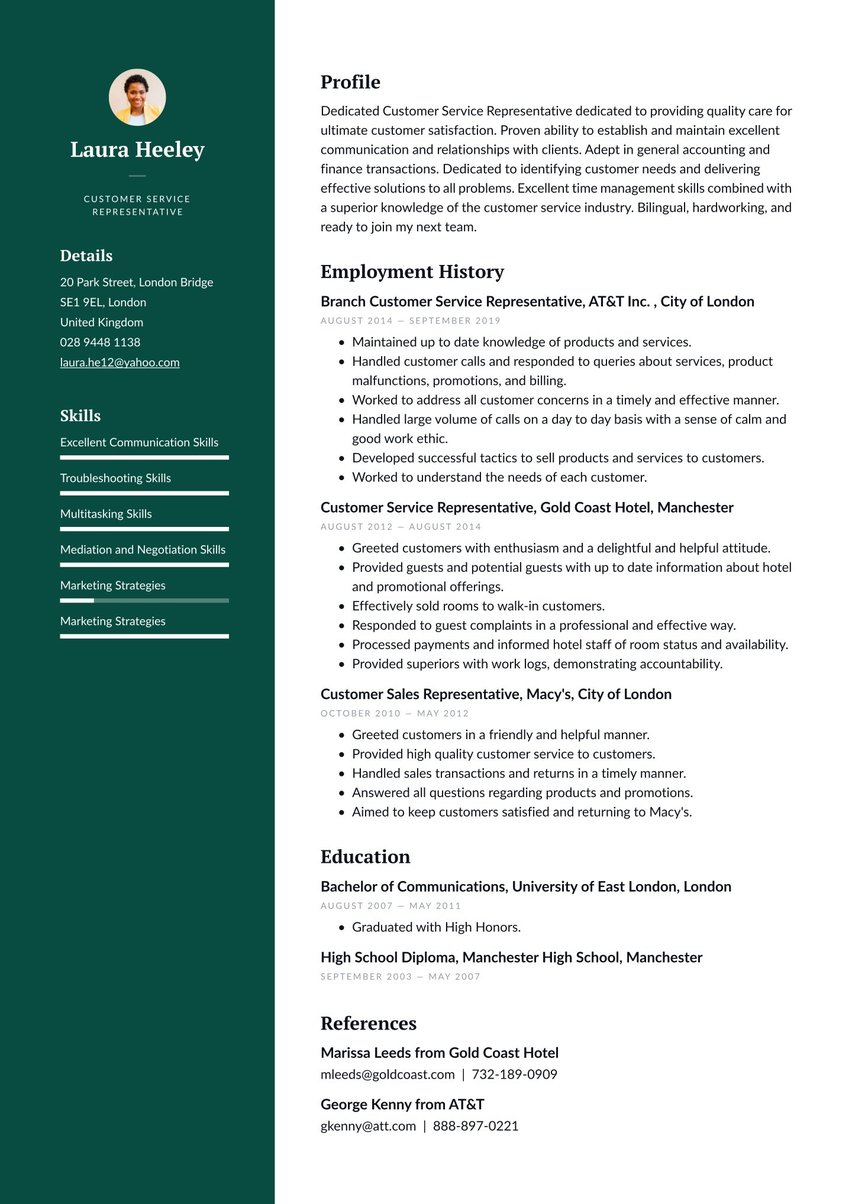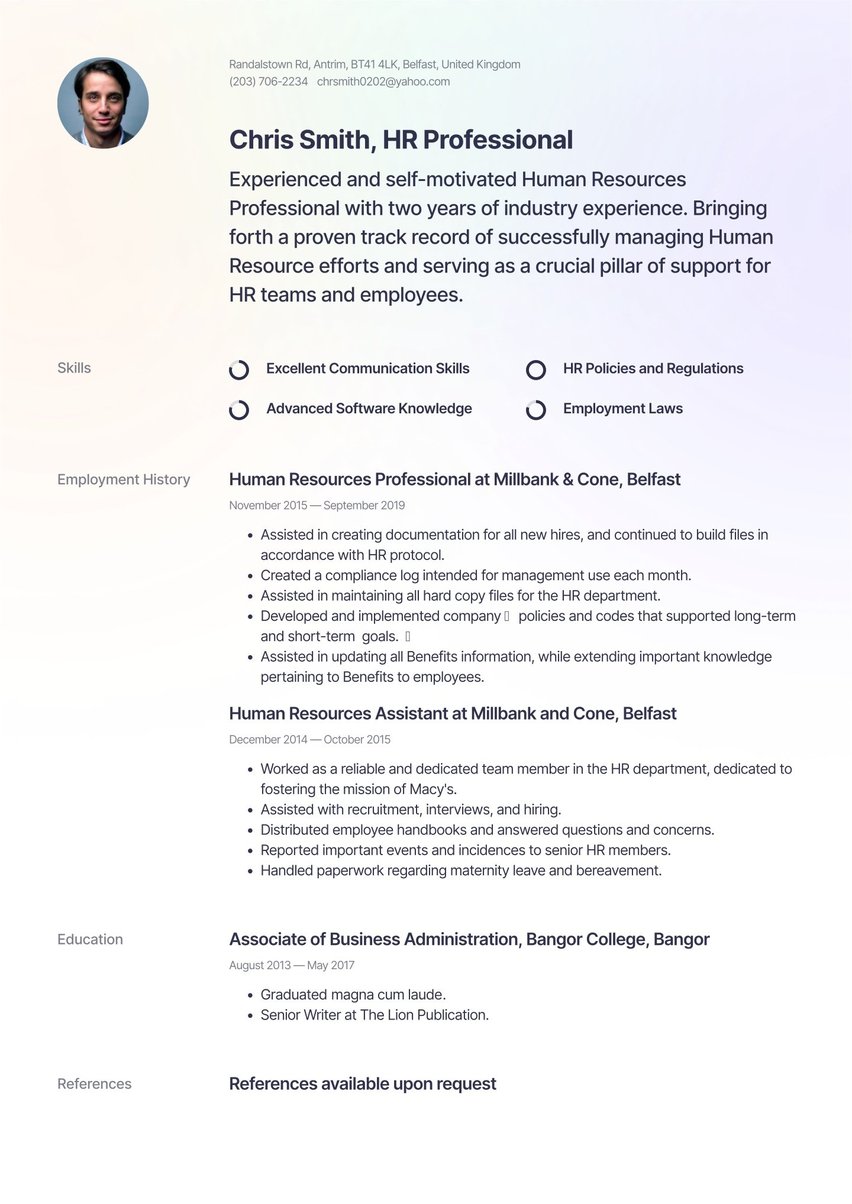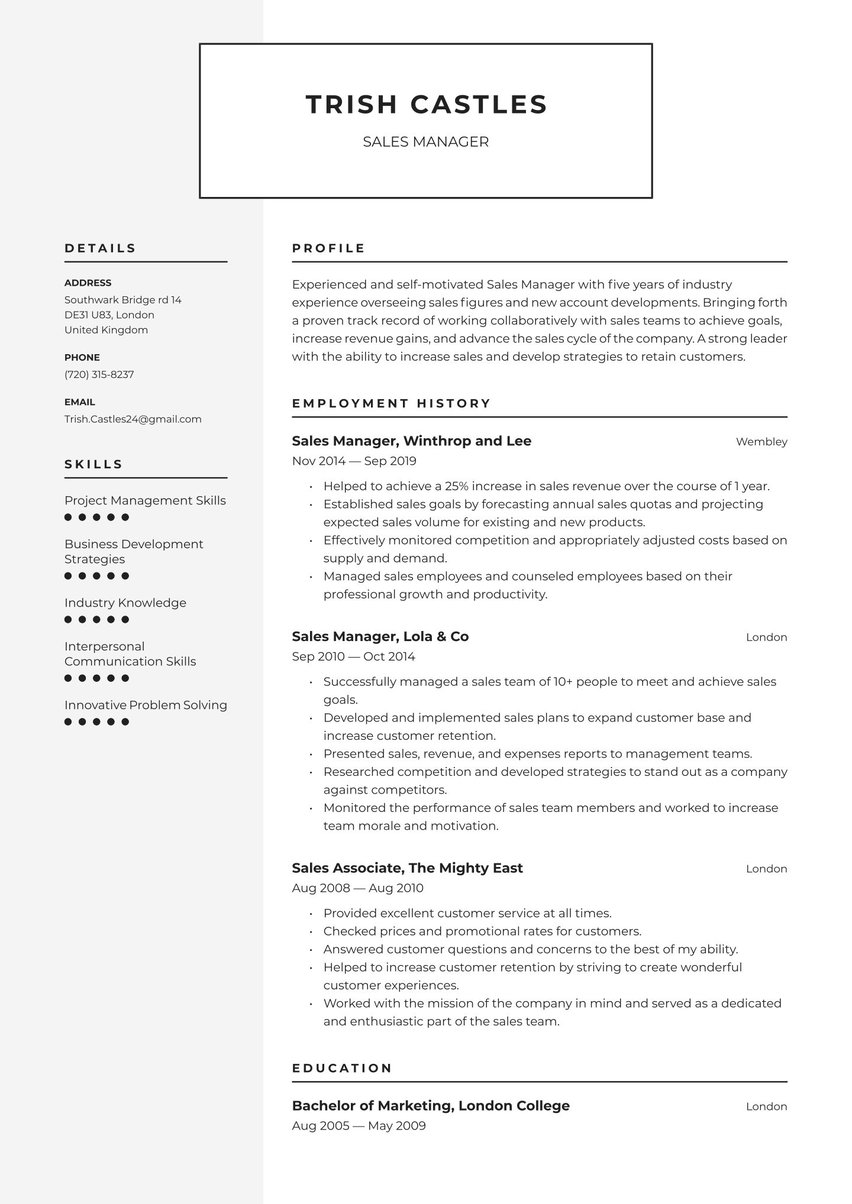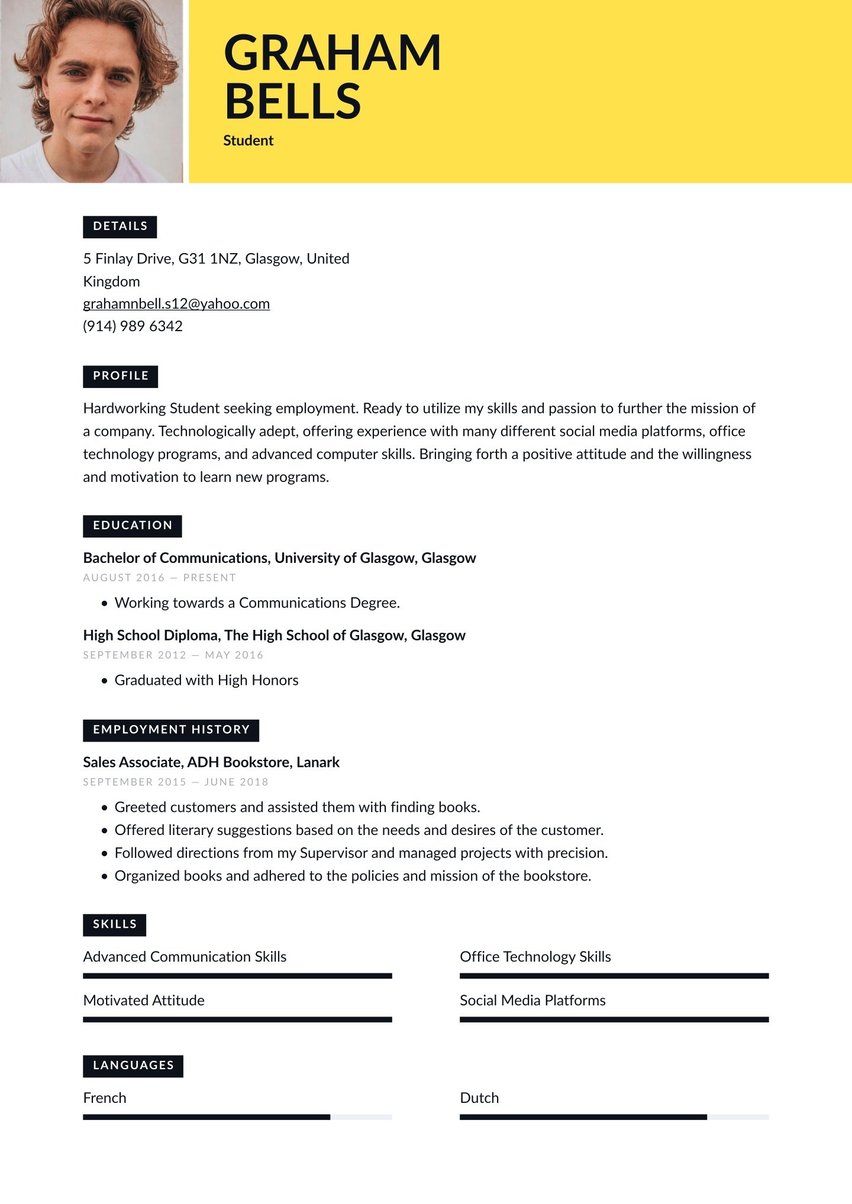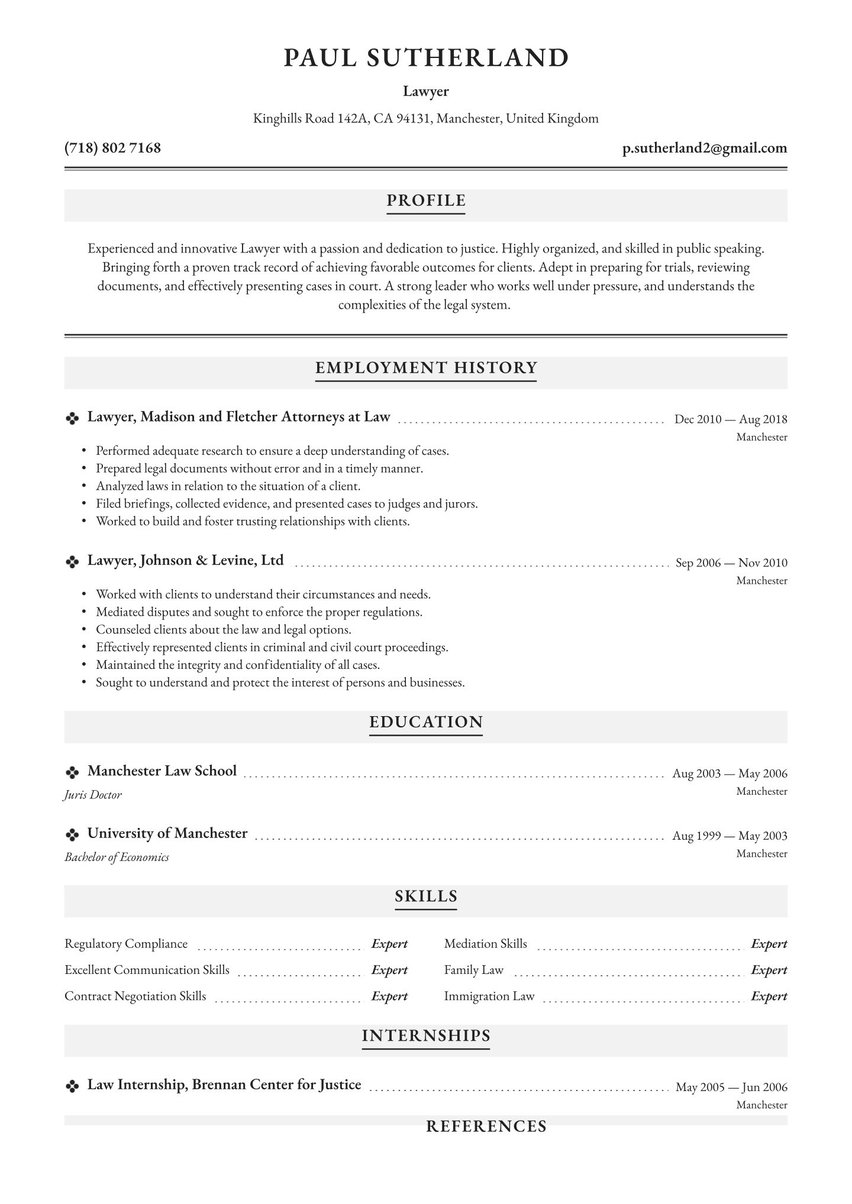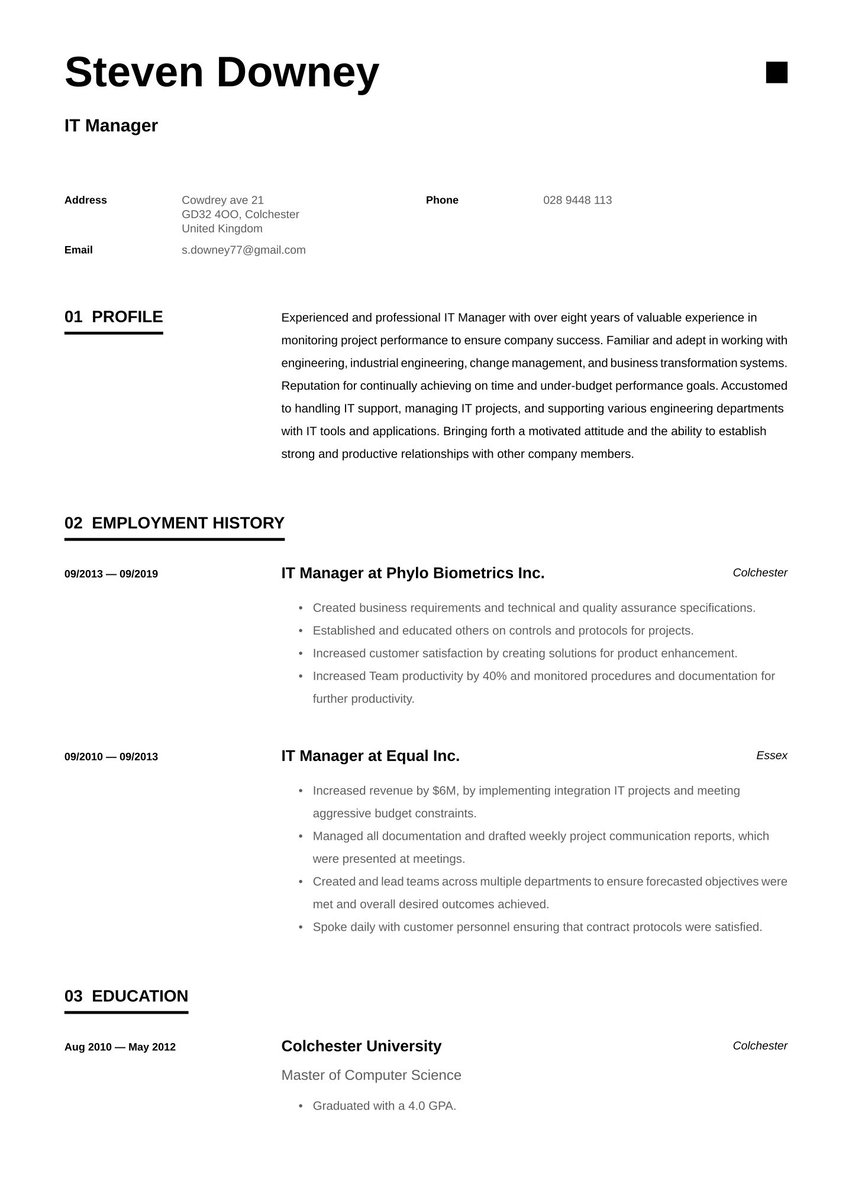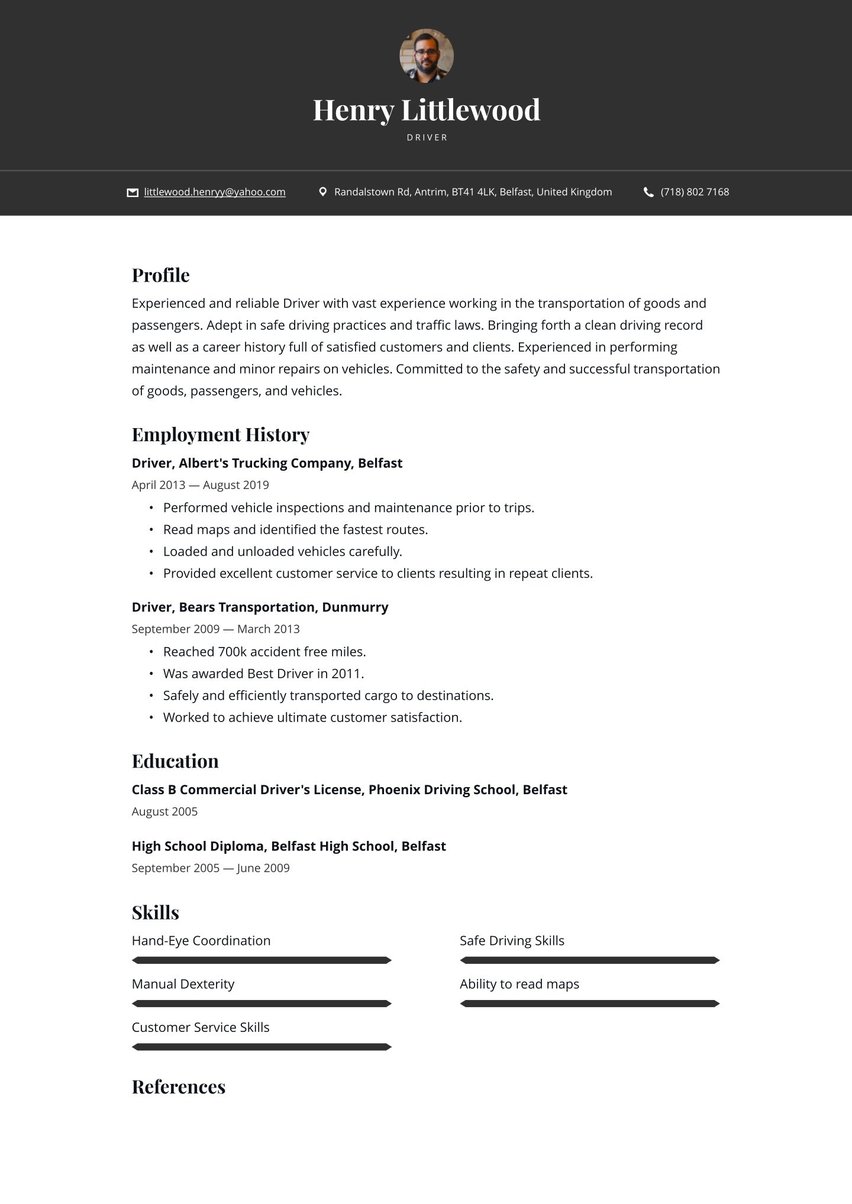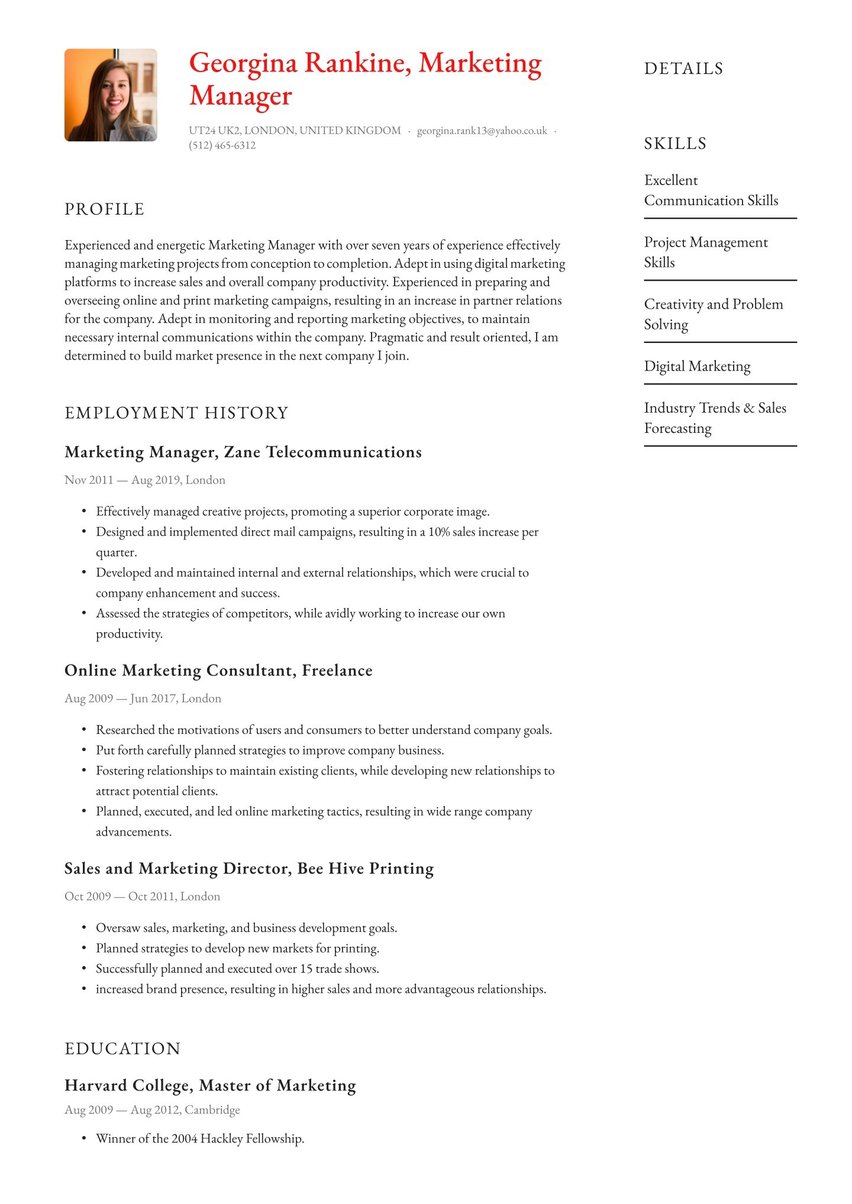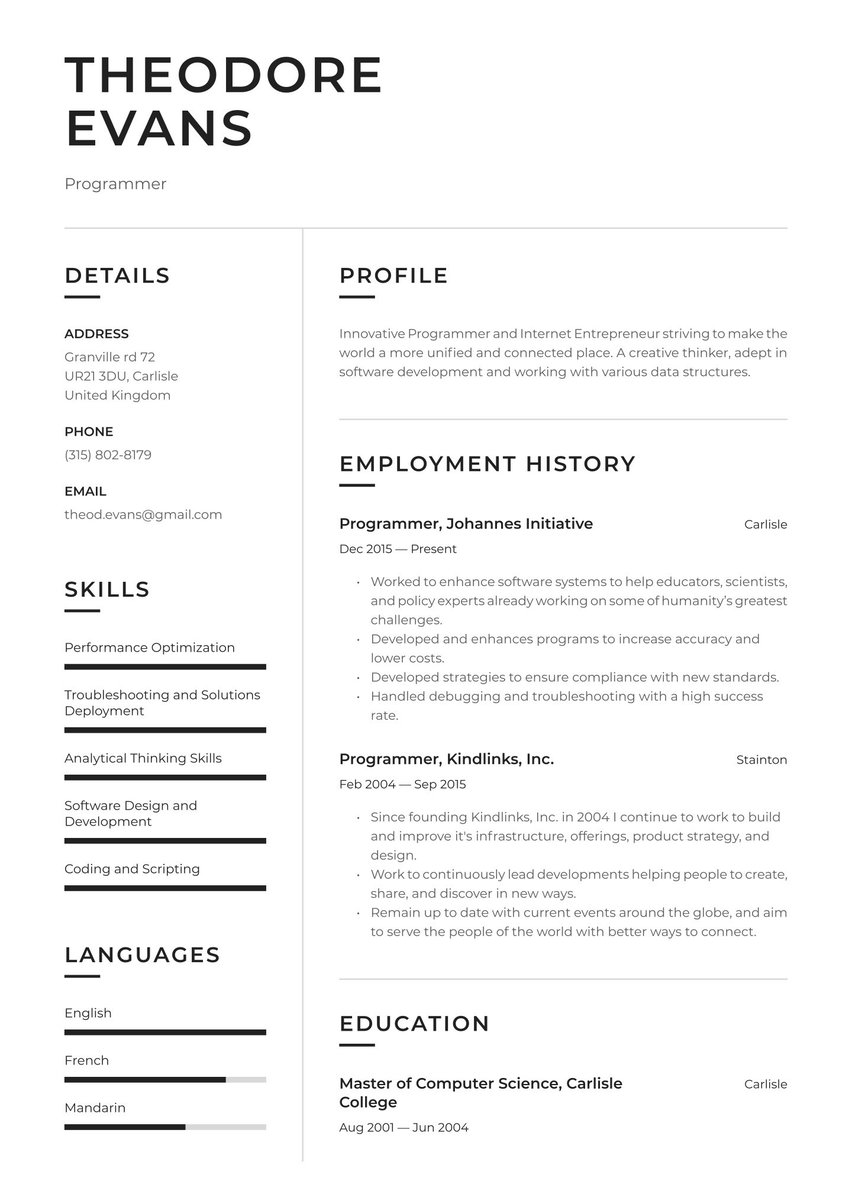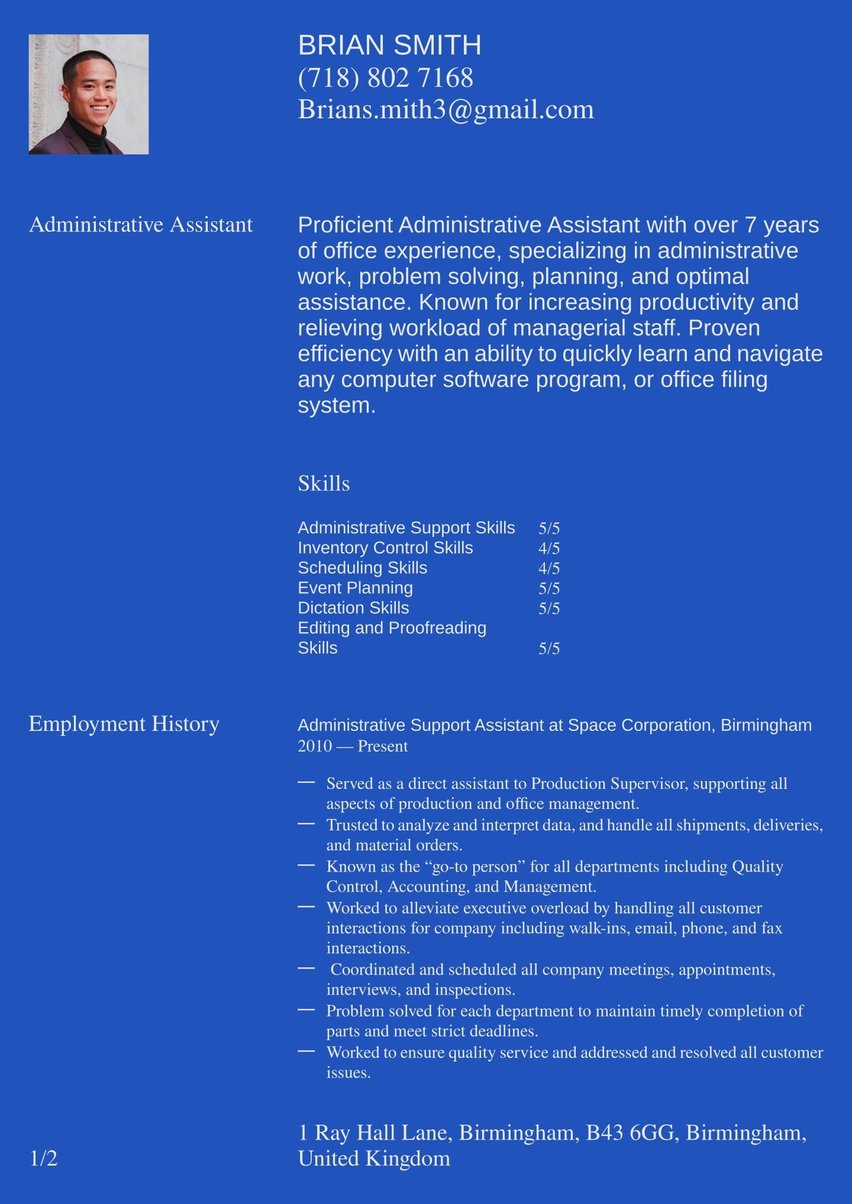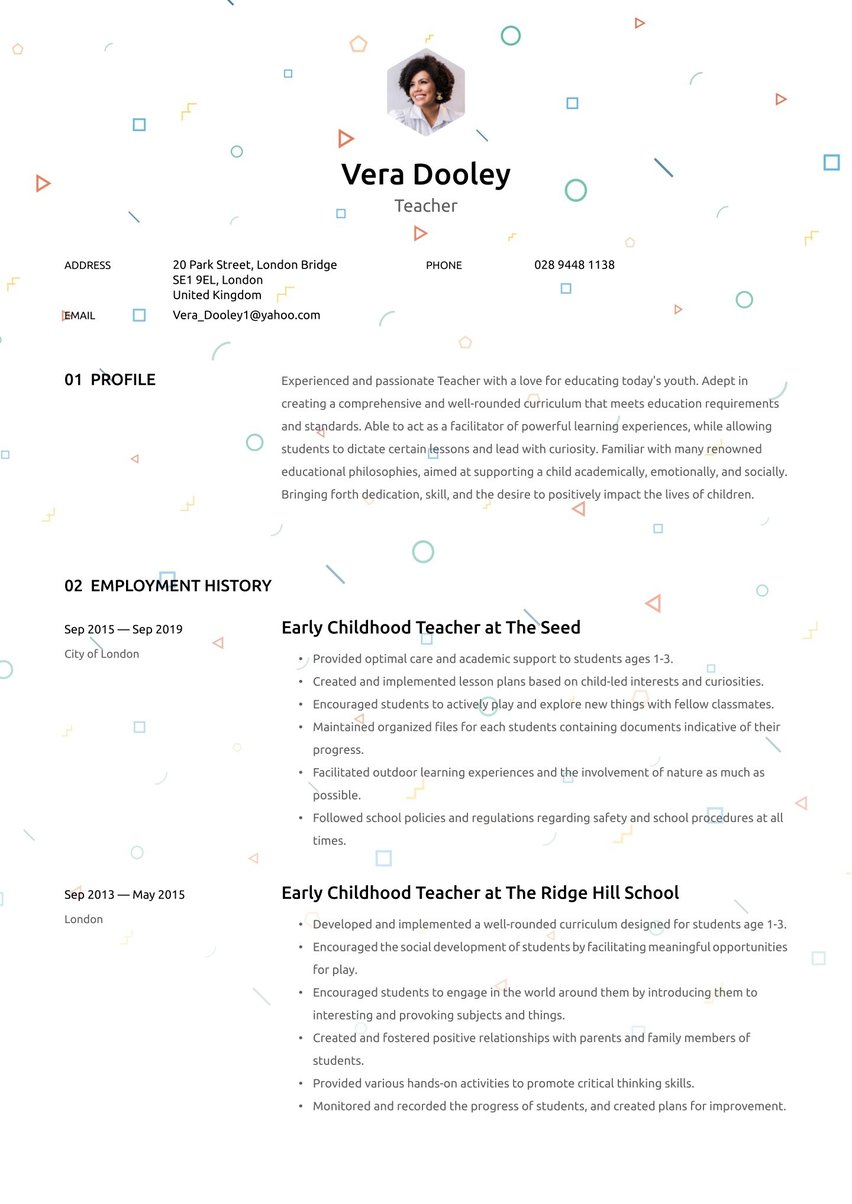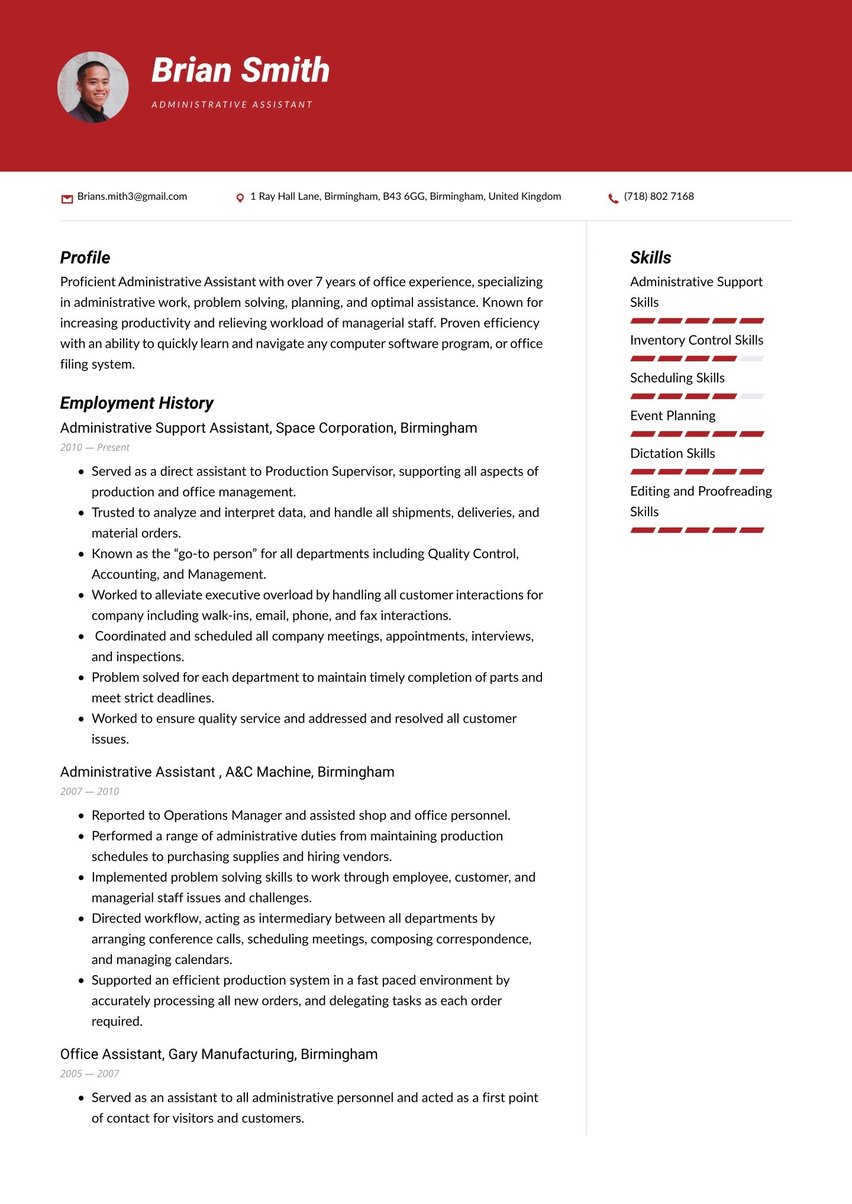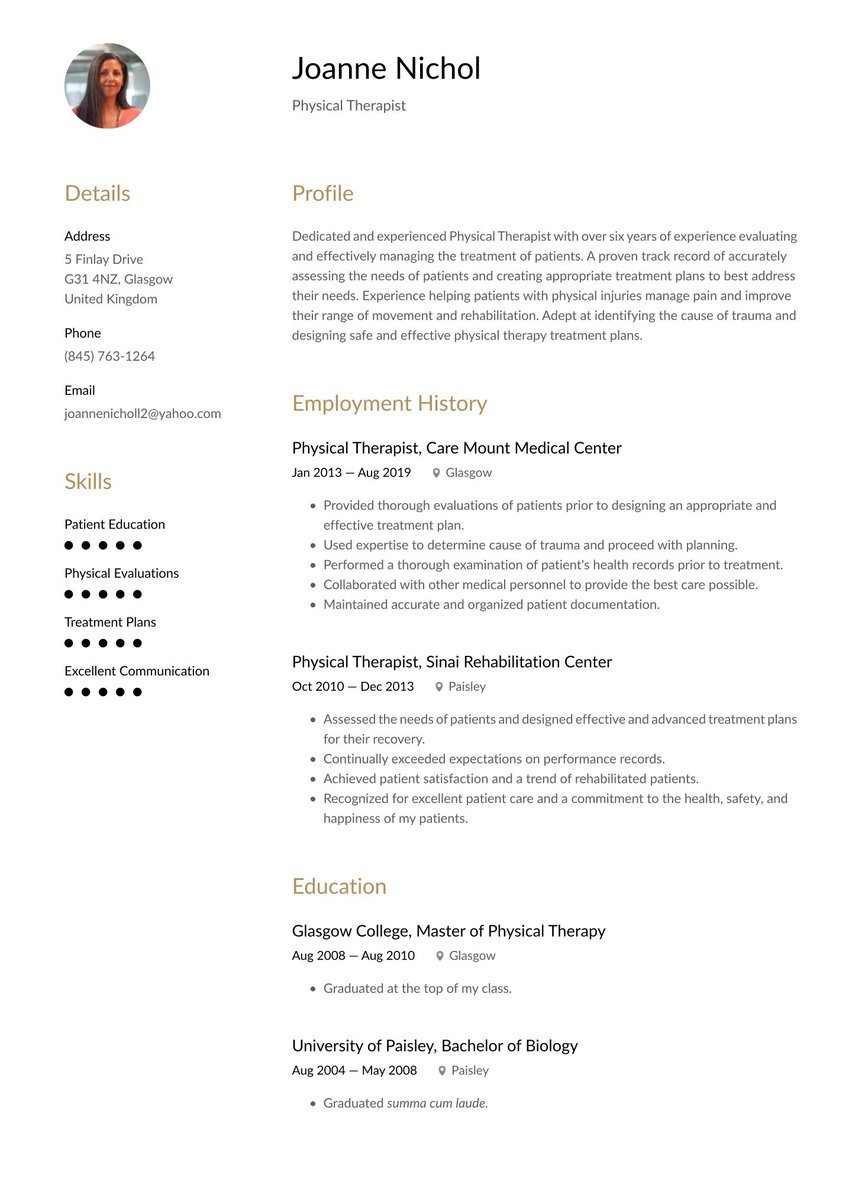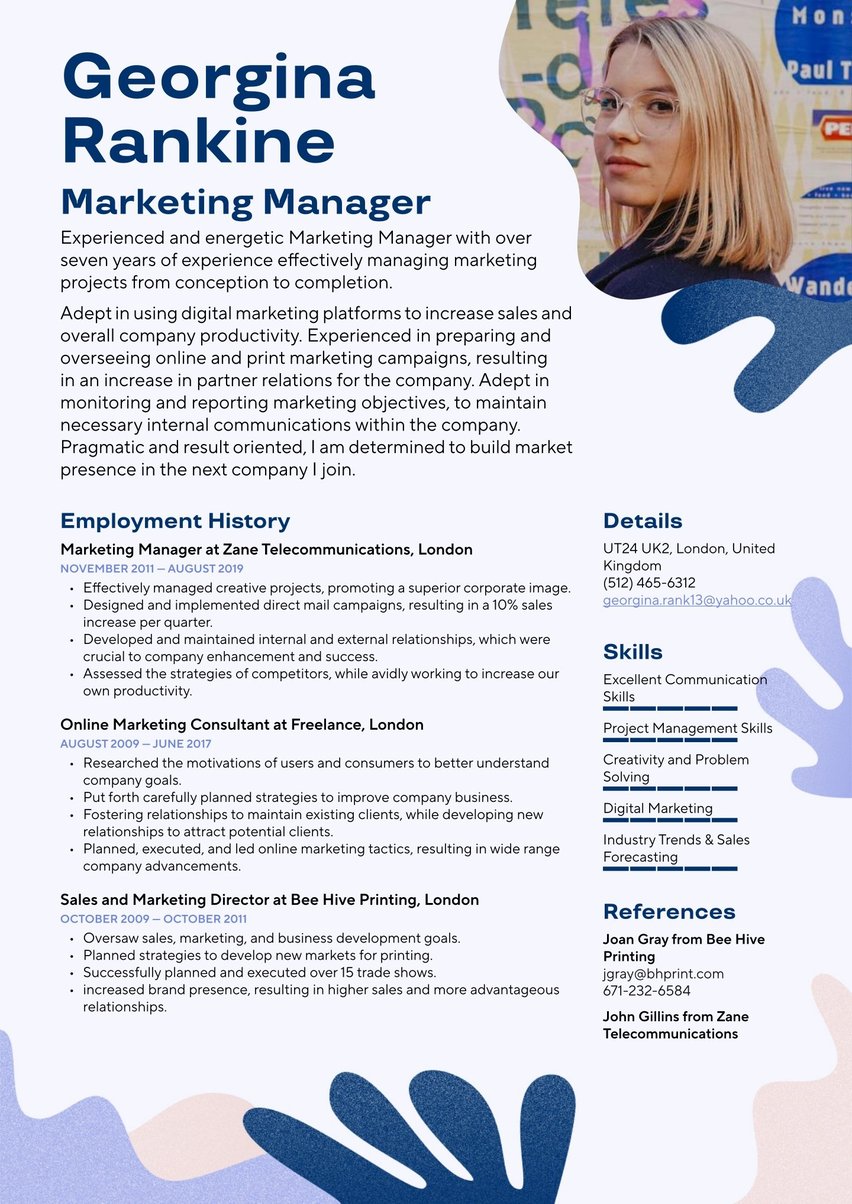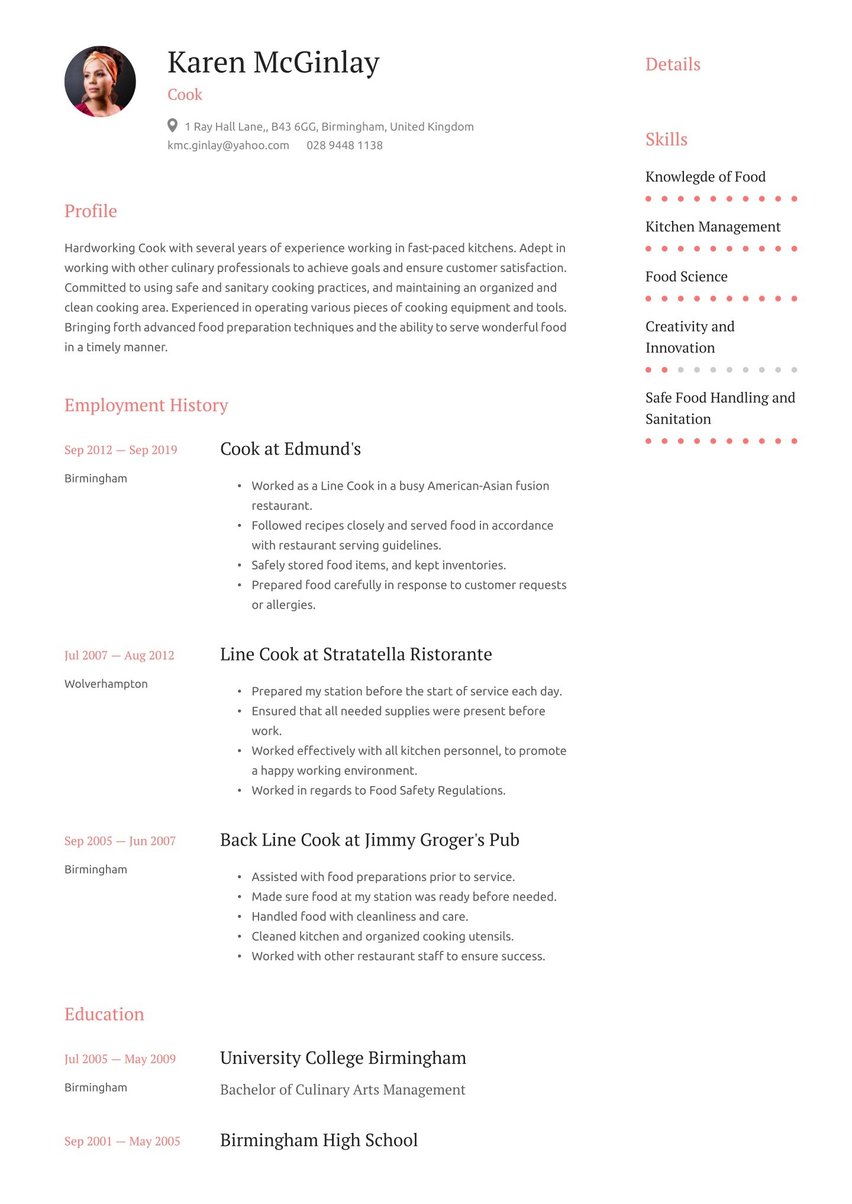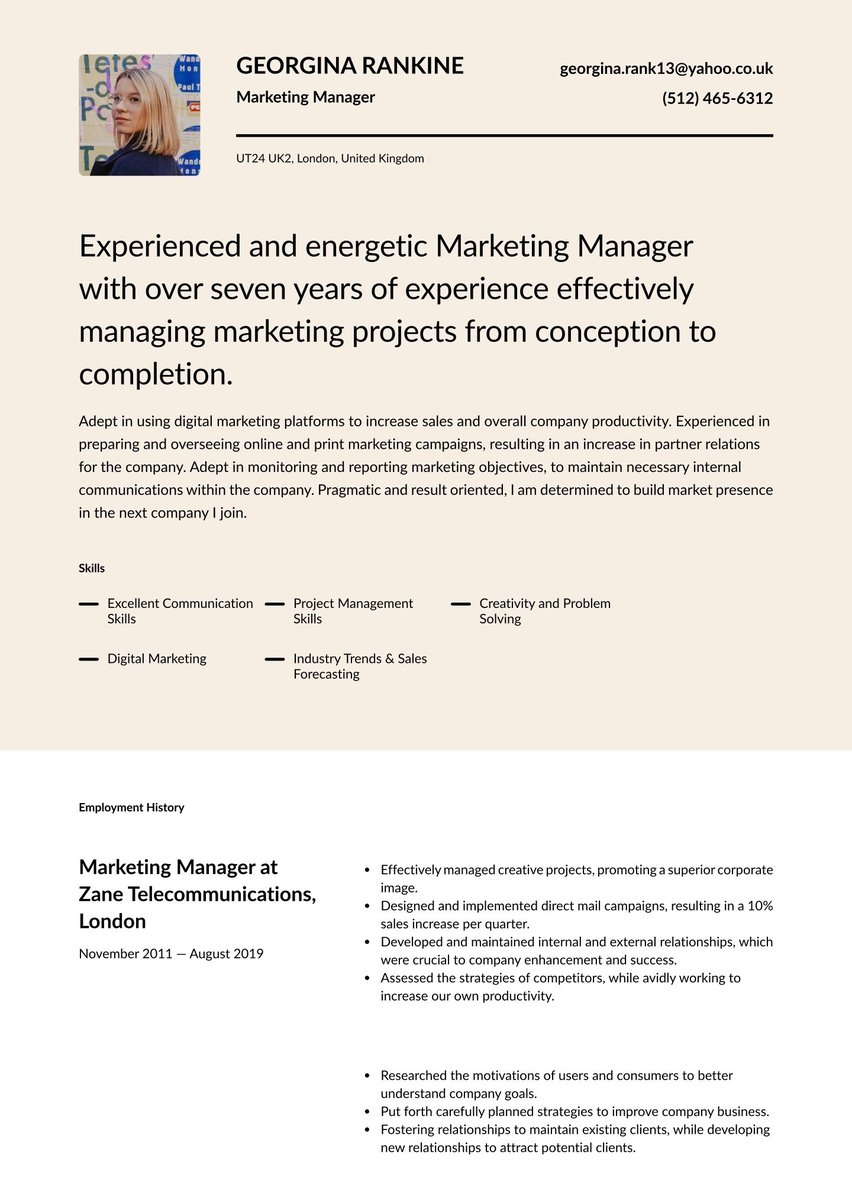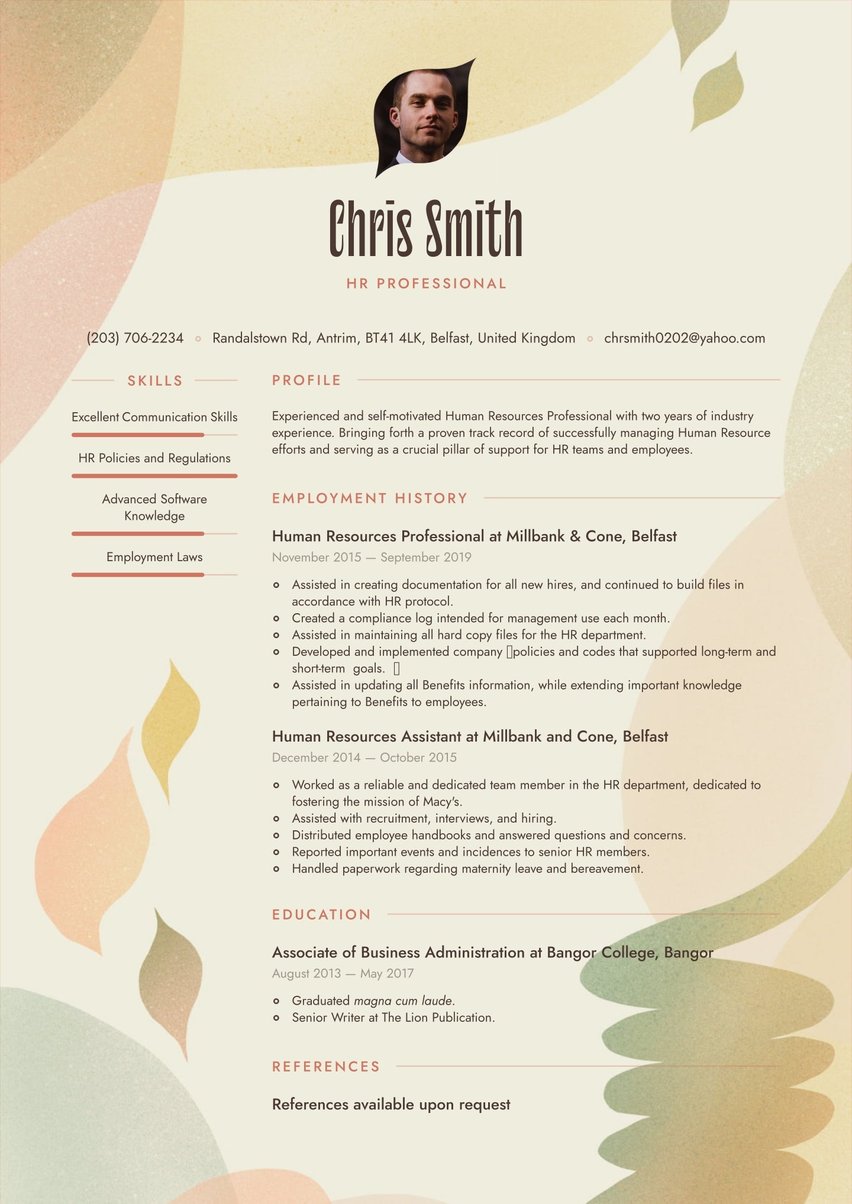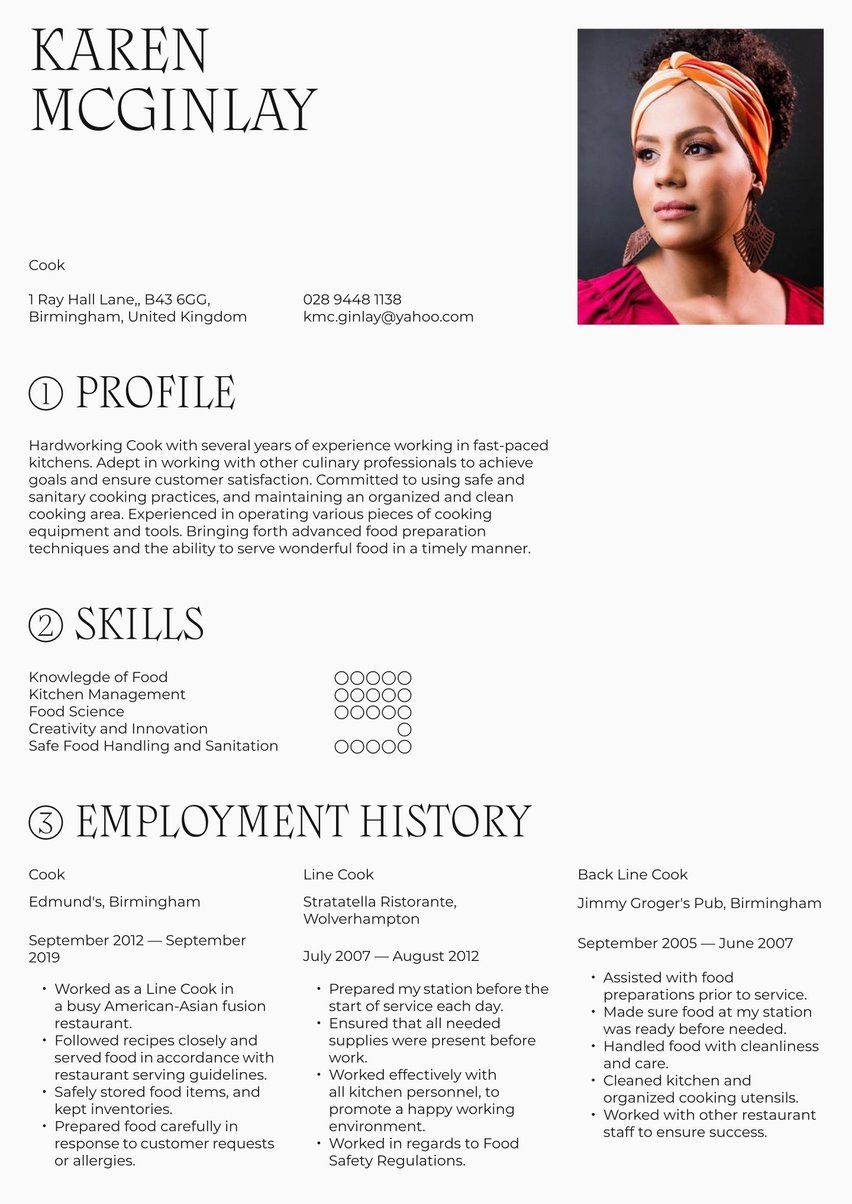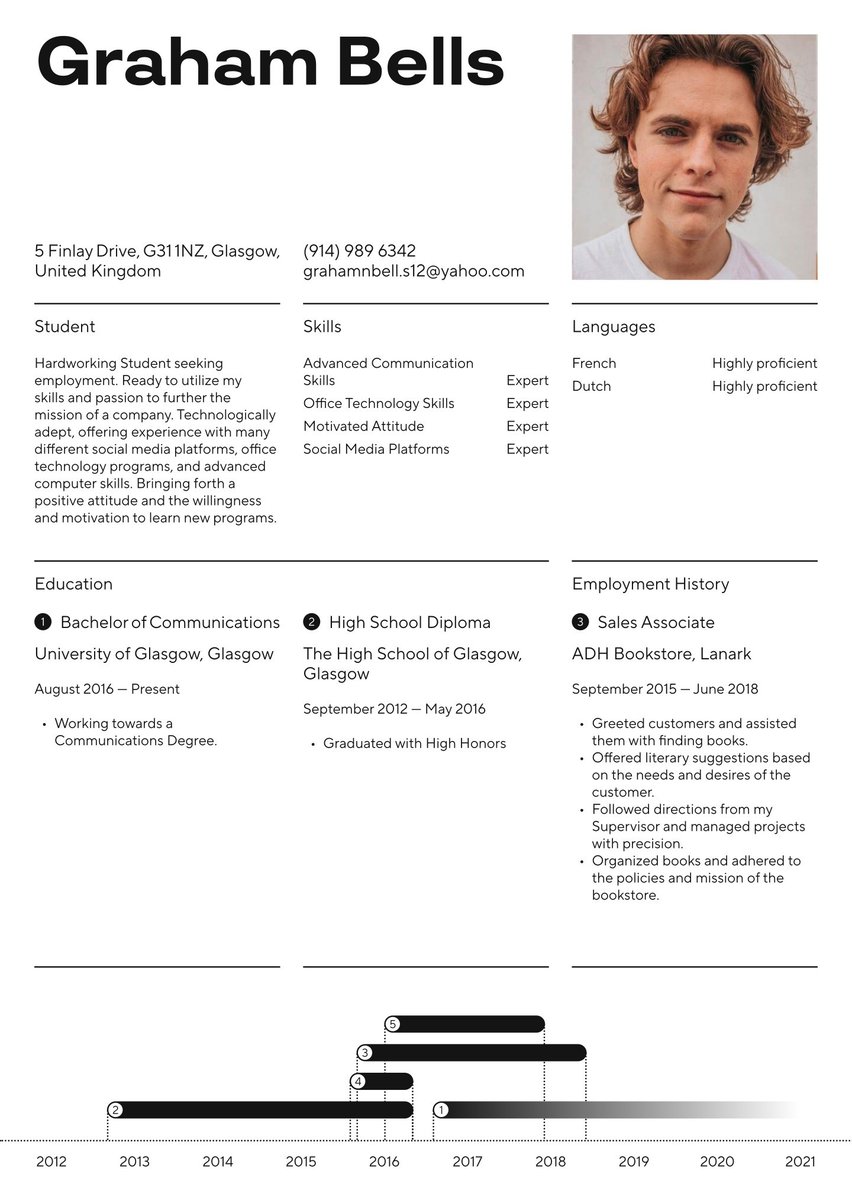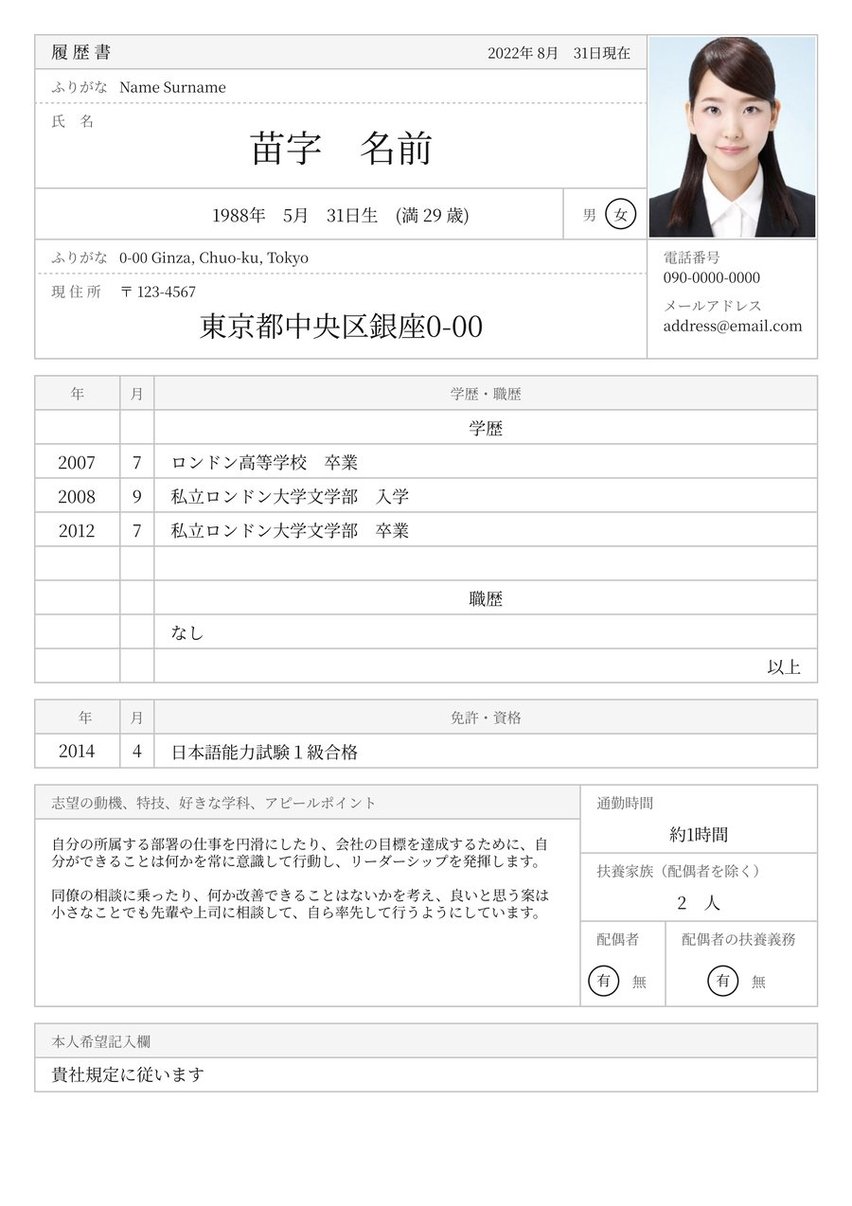Dynamic, energetic and engaging dance professional and instructor. Well-versed in a variety of dance forms and techniques. Continually maintain optimal levels of physical fitness and personal health. Excel at expressive movement across a variety of dance mediums.
04/2019 - present, Dance Instructor, London Dance Academy, London, UK
- Provide knowledgeable, informed instruction in a variety of dance techniques.
- Demonstrate dance form and patterns to students from diverse backgrounds.
- Maintain student records and evaluate / report student performance.
- Continually work to perfect personal dance skills and knowledge.
02/2015 - 03/2019, Dance Performance Artist, Sadler's Wells Theatre, London, UK
- Performed in numerous dance programs for leading globally recognised dance organisation.
- Attended multiple dance practices to ensure immaculate choreography during public performances.
- Worked closely with performing and non-performing colleagues to ensure seamless planning and delivery of performances.
06/2012 - 01/2015, Theatre Technician, Perform in the Park, London, UK
- Assisted in building performance sets / stages within a fast-paced, deadline-oriented environment.
- Setup and ensured proper functionality of lighting, communication and audio systems.
- Utilised basic construction skills to assemble and maintain sets.
- Ensured ongoing commitment to Health and Safety practices and compliance with all applicable regulations.
11/2012 - 11/2014, Commercial Dance Certificate, Dance College London, London, UK
09/2008 - 05/2012, BA (Hons) Performing Arts, University of East London, London, UK
- Performing Arts
- Modern Dance Techniques
- Ballet
- Physical Fitness
- Coordination & Stamina
- Dance Instruction
- Dance Studio Operations
- Teamwork & Collaboration
- Recordkeeping & Reporting
- Set Building & Maintenance
Whether you are into tap, or have a flair for contemporary or hip hop, becoming a dancer is no easy feat. There’s tough competition in this industry and you need a high level of discipline to make it to the top. Luckily, we’re here to help you along the way.
To land your next audition, you will need a dancer CV that puts the spotlight on your talents. If you don’t know where to start, let’s keep things simple. Here at Resume.io, we have all the resources you need including a library of CV examples and writing guides. In the following guide, with corresponding dancer CV, we will be covering these core subjects:
- What a dancer does and what industries they work in
- How to write a professional dancer CV from scratch
- Hints and advice on what to include in each section
- The golden rules of CV layout and design
What does a dancer do?
The short answer is that dancers… dance. However, there’s much more to this captivating art form than first meets the eye. You use movement and gestures to convey a concept to the audience. Often enough, that means learning specific choreography.
Of course, there are many different types of dancing out there, of which you may be aware. These include contemporary dance, tap dancing, hip hop, ballet, waltz, jazz, salsa, tango, etc. The list could go on forever. If you train at a dance school, you may choose to specialise in one of the above or even dabble in each of them.
Dancers can work in a selection of sectors. Should you go into the entertainment industry, you may work at a dance company, a theatre company, or for agencies. You may find yourself being a backing dancer for Cher or dancing in a movie. On the other hand, dancers often work in hospitality and tourism. For example, you may choose to work at a holiday park, on a cruise liner, or at a theme park. The world is your oyster.
How to write a dancer CV
You might be itching to pull on your dancing shoes and start moving. However, before you can start applying for positions, you need to make sure that the structure is right. Your CV should contain the following elements:
- The CV header
- The CV summary (aka profile or personal statement)
- The employment history section
- The CV skills section
- The education section
Writing your dancer CV doesn’t have to be difficult. Be sure to tailor your application to the dance company or business to which you are applying. Doing a little research before you get started will get you far. Ensure that your CV is meeting the recruiters’ key criteria.
Take a look at the original job advert and pick out any keywords you see there. Including these in your CV may help you to succeed. Many recruiters now use Applicant Tracking Systems (ATS). The software filters applications by how well they meet the job spec. By using the same words and terminology as the employer, you might just beat the bots.
In the following sections, we will cover the basics of how to write your dancer CV. However, if you’re looking for broader brush strokes, check out our comprehensive CV writing guide. You can also take a look at our dancer CV example below:
Choosing the best CV format for a dancer
Most of the time, when you’re writing a CV, you would use the reverse chronological format. That means you start with your most recent accolades at the top of the page and work your way back in time as you move down. However, there are some exceptions.
If you’re new to the world of dance, you may want to use the functional CV format. This approach highlights your skills and talents over your experience. Unsure which one to go with? Don’t panic. You can read more about the different types of CV formats here.
Looking for some formatting inspiration? We’ve got you covered. Check out our additional CV examples here for hints on how to get it right:
CV summary example
Your CV summary sits at the top of the page and is a short bio about you. Here is where you should slide in all of the important information. It’s your highlights reel. Where did you study? What types of dance are you proficient in? What performances have you been in?
You only have three-to-four lines to fill, so make them count. You can leave out any openers such as “I am,” “I have,” I did” etc. Get straight to the point. Make use of powerful adjectives — such as “confident” or “creative” — to engage the reader.
Dynamic, energetic and engaging dance professional and instructor. Well-versed in a variety of dance forms and techniques. Continually maintain optimal levels of physical fitness and personal health. Excel at expressive movement across a variety of dance mediums.
Employment history sample
The employment section of your CV includes any dance positions you’ve held before now. You can include both long-term roles and one-off performances. You may want to use the reverse chronological order here. That way, recruiters can see your most recent positions toward the top of the page. List roughly three or four positions in this CV section.
Dance Instructor at London Dance Academy, London, UK
April 2019 - Present
- Provide knowledgeable, informed instruction in a variety of dance techniques.
- Demonstrate dance form and patterns to students from diverse backgrounds.
- Maintain student records and evaluate / report student performance.
- Continually work to perfect personal dance skills and knowledge.
Dance Performance Artist at Sadler's Wells Theatre, London, UK
February 2015 - March 2019
- Performed in numerous dance programs for leading globally recognised dance organisation.
- Attended multiple dance practices to ensure immaculate choreography during public performances.
- Worked closely with performing and non-performing colleagues to ensure seamless planning and delivery of performances.
Theatre Technician at Perform in the Park, London, UK
June 2012 - January 2015
- Assisted in building performance sets / stages within a fast-paced, deadline-oriented environment.
- Setup and ensured proper functionality of lighting, communication and audio systems.
- Utilised basic construction skills to assemble and maintain sets.
- Ensured ongoing commitment to Health and Safety practices and compliance with all applicable regulations.
CV skills example
As a dancer, having a strong roster of talents on your CV is important. You need to include a mixture of hard and soft skills. These are skills that relate directly to dancing and those that help you get the job done. Your CV skills list doesn't need to be ultra-long. You should keep things short and sweet. Pick out around 8-10 skills that you want to showcase.
- Performing Arts
- Modern Dance Techniques
- Ballet
- Physical Fitness
- Coordination & Stamina
- Dance Instruction
- Dance Studio Operations
- Teamwork & Collaboration
- Recordkeeping & Reporting
- Set Building & Maintenance
Dancer CV education example
Chances are, you have completed a two-to-three-year course at a dance school, a performing arts academy, or a university. You can shout about this experience in your education section. Use the reverse chronological format for this one. Start by listing the institute name and dates you attended. Below that, you can bullet-point any details about the specific course you studied.
Commercial Dance Certificate, Dance College London, London, UK
November 2012 - November 2014
BA (Hons) Performing Arts, University of East London, London, UK
September 2008 - May 2012
CV layout and design
Ready to start working on your dancer CV? If you want to make the right first impression, the design and layout matter. Don’t make the mistake of overlooking this crucial part of the process. Here are some of the core dos and don’ts to get you started.
- Get creative! You’re not applying for an office job. Add a splash of colour and a cool design into the mix.
- Consider including links to your online portfolio or showreel.
- Make use of white space. Leave an appropriate amount of space between each section of your CV.
- Include any imagery. The recruiter doesn’t need a photo of you at the barre or of your dance company.
- Try to cram too much information onto the page. Leave some space.
- Use more than two fonts. There’s a difference between being creative and being chaotic. Walk the line.
Recruiters spend an average of seven seconds reviewing each incoming application. If your dancer CV doesn’t hit the mark, you will end up in the “junk” pile super fast. Make sure that you’re ticking all of the right boxes by following our golden rules here.
Key takeaways for a dancer CV
- The world of dance is highly competitive. While you will showcase your moves during auditions, you can use a CV to introduce yourself to recruiters.
- Make sure you include all of the relevant training and skills on your CV.
- Optimise your CV by including keyphrases and keywords. That way, your application is more likely to get past the ATS.
Take all of the hassles out of creating your application by using our field-tested CV templates!

